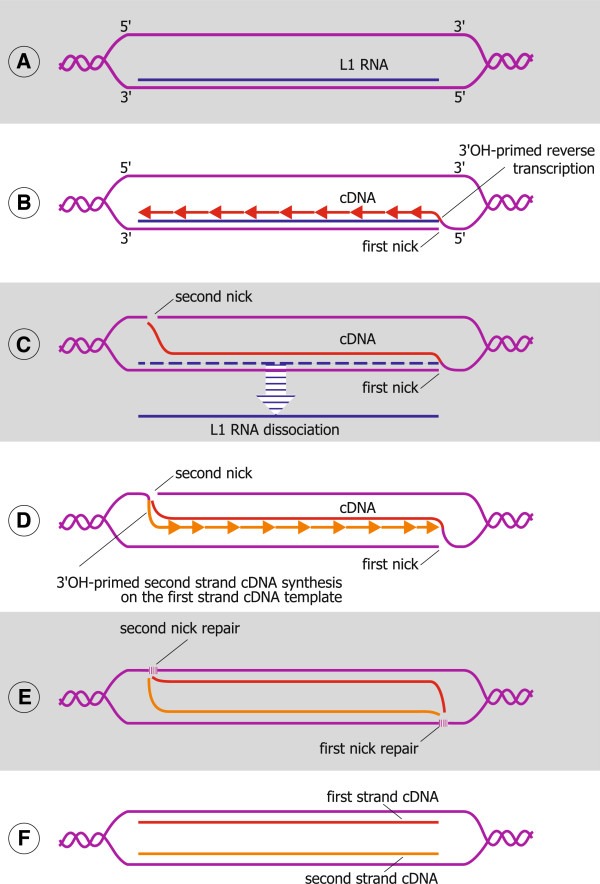Figure 1.
A hypothetical mechanism of noncanonical L1 DNA replication. A. Formation of an L1 DNA:RNA duplex. Heterogeneous FL-L1 RNAs, being assembled with L1 ORF1p and ORF2p, find their “parental” complementary sequences in the genome and form L1 DNA:RNA hybrids. The chaperone activity of ORF1p, which includes the melting of mismatched duplexes, is deemed indispensable for pairing of the L1 RNA with the fully complementary L1 DNA. The displaced DNA strand of an L1 unit is likely stabilized by auxiliary factors. B. First-strand cDNA synthesis. ORF2p bound to the 3′ end of the FL-L1 RNA nicks the bottom DNA strand and synthesizes the first cDNA strand from the liberated 3′-hydroxyl. C. Second nick formation. When ORF2p reaches the 5′ end of the L1 RNA, it nicks the top DNA strand at the 5′ end of the L1 element. ORF2p then switches templates from the RNA to the cDNA. The L1 RNA likely dissociates at this point. D. Second-strand cDNA synthesis on the first cDNA template. E. Nicking at the genomic DNA-cDNA junctions and the ligation of the segments of the “parental” DNA at the sites of the first and second nicks by auxiliary factors. F. Unpairing of the new L1 cDNA strands and their pairing with the “parental” strands by auxiliary factors. The ends of the new cDNA strands are joined with the new strands synthesized by the canonical mechanism on the adjacent segments of the “parental” strands. Each cell division produces two cells with equal amounts of old and new DNA synthesized by a combination of two different mechanisms.

